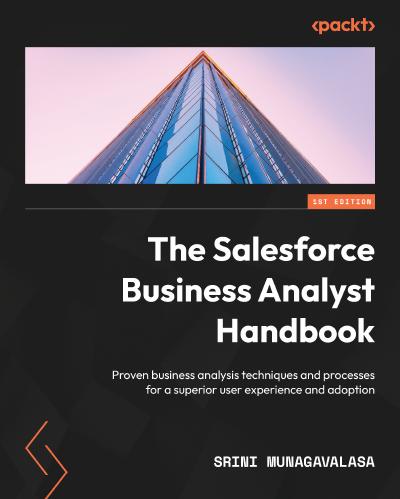
English | 2022 | ISBN: 978-1801813426 | 232 Pages | PDF, EPUB | 22 MB
Become a proficient Salesforce business analyst with the help of expert recommendations, techniques, best practices, and practical advice
Key Features
- Learn the intricacies and nuances of every stage of a project’s implementation
- Discover real-world examples, tips, and tricks that you can apply to any Salesforce project
- Overcome the challenges inherent in user interaction and improve your customer experience
Salesforce business analysis skills are in high demand, and there are scant resources to satisfy this demand. This practical guide for business analysts contains all the tools, techniques, and processes needed to create business value and improve user adoption.
The Salesforce Business Analyst Handbook begins with the most crucial element of any business analysis activity: identifying business requirements. You’ll learn how to use tacit business analysis and Salesforce system analysis skills to rank and stack all requirements as well as get buy-in from stakeholders. Once you understand the requirements, you’ll work on transforming them into working software via prototyping, mockups, and wireframing. But what good is a product if the customer cannot use it? To help you achieve that, this book will discuss various testing strategies and show you how to tailor testing scenarios that align with business requirements documents. Toward the end, you’ll find out how to create easy-to-use training material for your customers and focus on post-production support – one of the most critical phases. Your customers will stay with you if you support them when they need it!
By the end of this Salesforce book, you’ll be able to successfully navigate every phase of a project and confidently apply your new knowledge in your own Salesforce implementations.
What you will learn
- Create a roadmap to deliver a set of high-level requirements
- Prioritize requirements according to their business value
- Identify opportunities for improvement in process flows
- Communicate your solution design via conference room pilots
- Construct a requirements traceability matrix
- Conduct user acceptance tests and system integration tests
- Develop training artifacts so your customers can easily use your system
- Implement a post-production support model to retain your customers
Resolve the captcha to access the links!